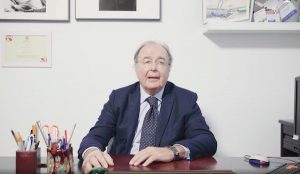New investigational drugs for cardiomyopathies
Prof. Frank Cecchi, president of AICARM Onlus
 In the last ten years, numerous research projects have been funded to identify new molecules capable of interacting directly on cardiac cells (“Cardiomyocytes”). Some forms of cardiomyopathy they derive in fact from the alterations of the molecular mechanisms that control the force of contraction often deriving from genetic variants inherited from one or both parents.
In the last ten years, numerous research projects have been funded to identify new molecules capable of interacting directly on cardiac cells (“Cardiomyocytes”). Some forms of cardiomyopathy they derive in fact from the alterations of the molecular mechanisms that control the force of contraction often deriving from genetic variants inherited from one or both parents.
If the force of contraction is reduced it develops in a variable time, but sometimes also very fast, one Dilated cardiomyopathy, while if it is increased, a picture of Hypertrophic cardiomyopathy. In other forms such as the different ones Arrhythmogenic cardiomyopathies instead, the links between the cells themselves are altered, or the molecular mechanisms that regulate the entry and exit of calcium, sodium and potassium, which are fundamental to ensure the life of cardiomyocytes.
Experiments with their different phases began a few years ago: in the laboratory on isolated cells, then in experimental animals (usually mice). If the results are positive these molecules are then tested in selected patient groups, and if the results are still positive and important side effects are excluded, they can later be marketed as drugs after being approved by the competent bodies (FDA for the USA and EMA for Europe).
La Unit Cardiomyopathies, directed by Prof. Olive tree, is an integral part of a network of Centers at an international level, active in the experimentation of these drugs that act on the molecular alterations underlying the various forms of Cardiomyopathy.
It is very likely that, once approved, these drugs will be available as early as the next few years.
In addition to the various drugs and tools (eg ICDs) whose use is now consolidated, they will improve symptoms, quality of life and survival of patients suffering from cardiomyopathy.
It is possible that they can then be used to prevent the cardiomyopathy develops in family members who have inherited the genetic variant but have not yet developed the disease.

